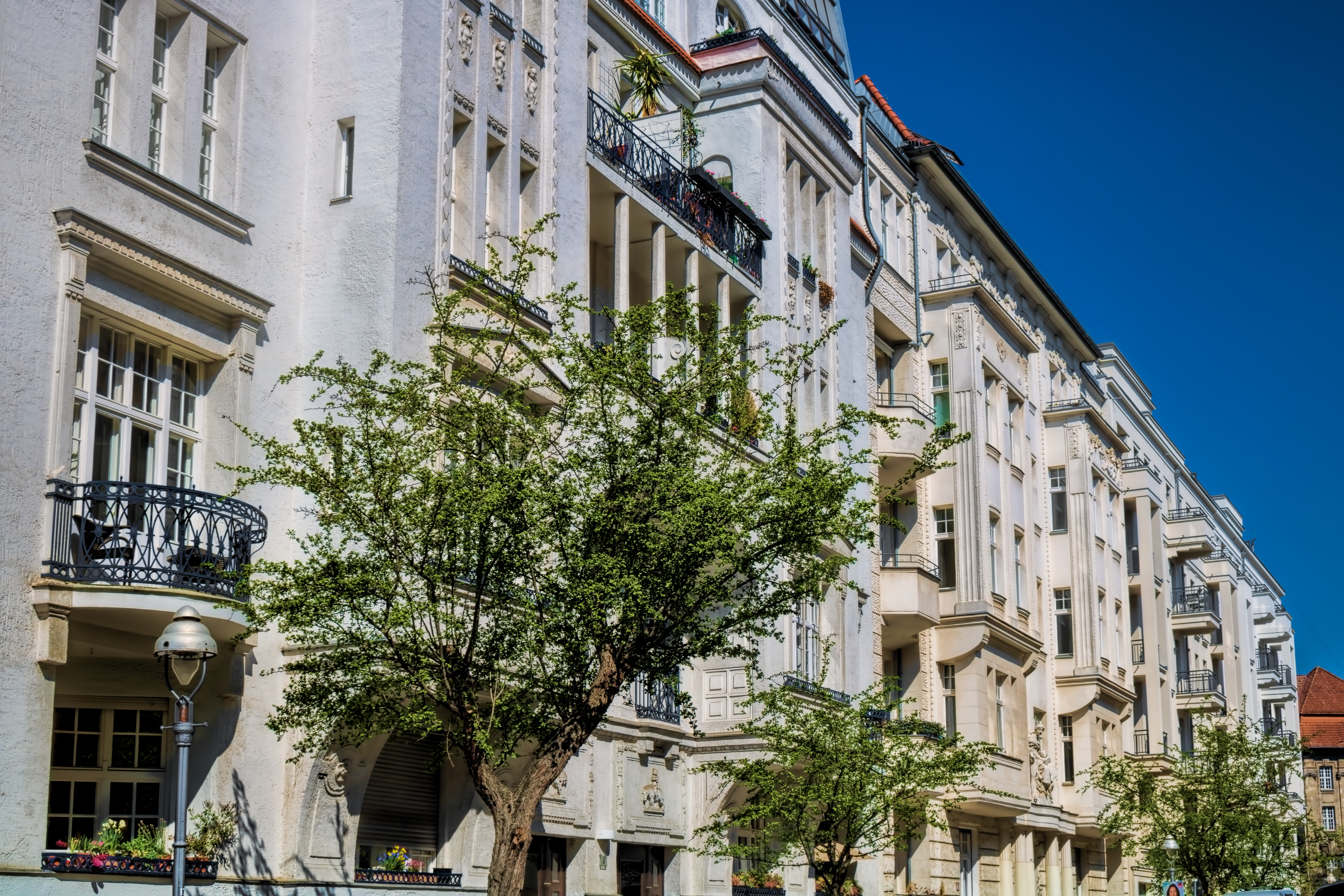Berlin-Charlottenburg: development and life in the borough
Charlottenburg is the fine address in the old west of Berlin. Here you can stroll along the Ku'damm, the world-famous shopping mile, enjoy beautiful residential buildings from the Wilhelminian period or indulge in the many cultural offerings to your heart's content. Charlottenburg is a paradise for art and culture lovers, and families feel very comfortable in the quiet and child-friendly neighborhood. The residential buildings, cafés and restaurants in beautiful buildings from the Gründerzeit in green and charming side streets can already make you go into raptures.

Real estate market in Berlin-Charlottenburg
The real estate market is booming in the capital and the run on the offered properties is unbroken. Charlottenburg is one of the most desirable places to live in the metropolis and also one of the most expensive. On the other hand, there is a very well-off group of buyers with a high demand for the sometimes very luxurious properties. Particularly in demand in Charlottenburg are the imposing and well-kept old buildings in charming surroundings.
Existing buildings
Average rental prices
19
EUR / m²
+39.80%
Average purchase prices
6,468
EUR / m²
+7.47%
Rental offers
474
-4.96%
Purchase offers
1,955
+47.87%
New builds
Average rental prices
26.03
EUR / m²
+29.40%
Average purchase prices
11,467
EUR / m²
+6.77%
Rental offers
135
-12.90%
Purchase offers
224
+24.65%
Average rental prices
19
EUR / m²
+39.80%
Average purchase prices
6,468
EUR / m²
+7.47%
Rental offers
474
-4.96%
Purchase offers
1,955
+47.87%
Charlottenburg: Real estate supply and development
In elegant Charlottenburg, equally elegant properties dominate the surrounding area. Depending on the location within Charlottenburg, stylish old buildings alternate with exclusive villas and upscale single-family homes. In addition, there are also typical post-war housing estates and, on the other hand, many ultra-modern new construction projects.
Offer of properties for rent and sale in Charlottenburg-Wilmersdorf
How are real estate prices developing in Charlottenburg?
Real estate prices in Charlottenburg are expected to continue to develop as they have in the past. The supply of existing apartments has declined in recent years, while demand from financially strong prospective buyers is high. Declining property prices for the district are therefore not to be expected.
Purchase price (m²) in Charlottenburg-Wilmersdorf
Existing building
Average purchase prices
6,468
EUR / m²
+7.47%
New builds
Average purchase prices
11,467
EUR / m²
+6.77%
Average purchase price Charlottenburg-Wilmersdorf
Current rents and trends
Rents in Charlottenburg have continued to rise in recent years. Due to the high demand from prospective tenants for Charlottenburg real estate, there is no end in sight to this trend.
Average rental prices in Charlottenburg-Wilmersdorf
Existing building
Average purchase prices
6,468
EUR / m²
+7.47%
New builds
Average purchase prices
11,467
EUR / m²
+6.77%
The population of Charlottenburg
Around 180,000 people live in Charlottenburg, half of whom are older than 45. Incomes are correspondingly high: A large proportion of Charlottenburg residents earn more than 2,600 euros net per month. Overall, the population is somewhat more homogeneous than in other central districts. More middle-class, upscale, not so multicultural and colorful - this is how the population of the district can be described.
Migration in Charlottenburg-Wilmersdorf
Moves in
Persons
-24.68 %
Moves out
Persons
-11.67 %
In the year 2021, development compared to the previous year
Life in Berlin-Charlottenburg
Your contact to ACCENTRO
Address
ACCENTRO Berlin
Kantstraße 44/45
10625 Berlin














